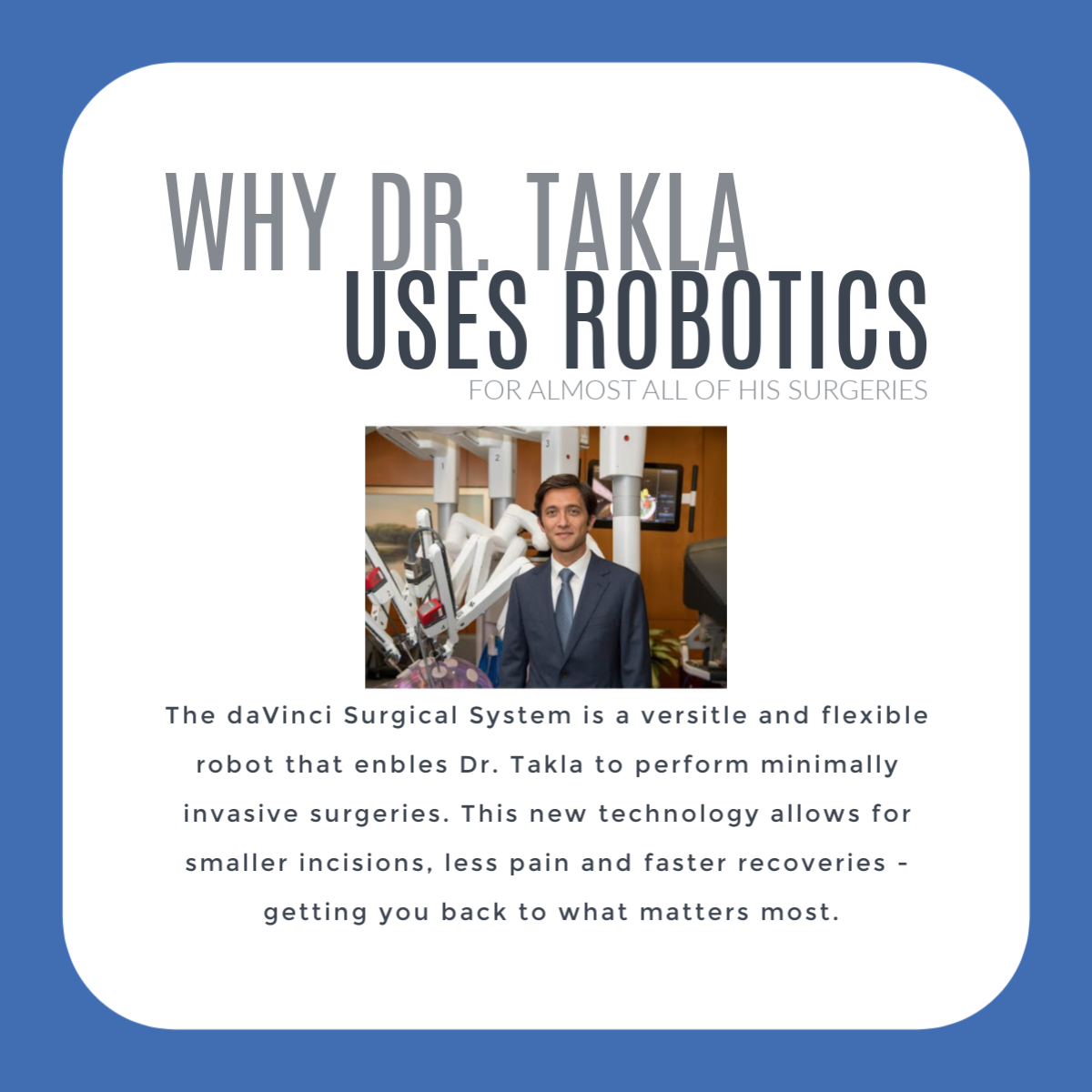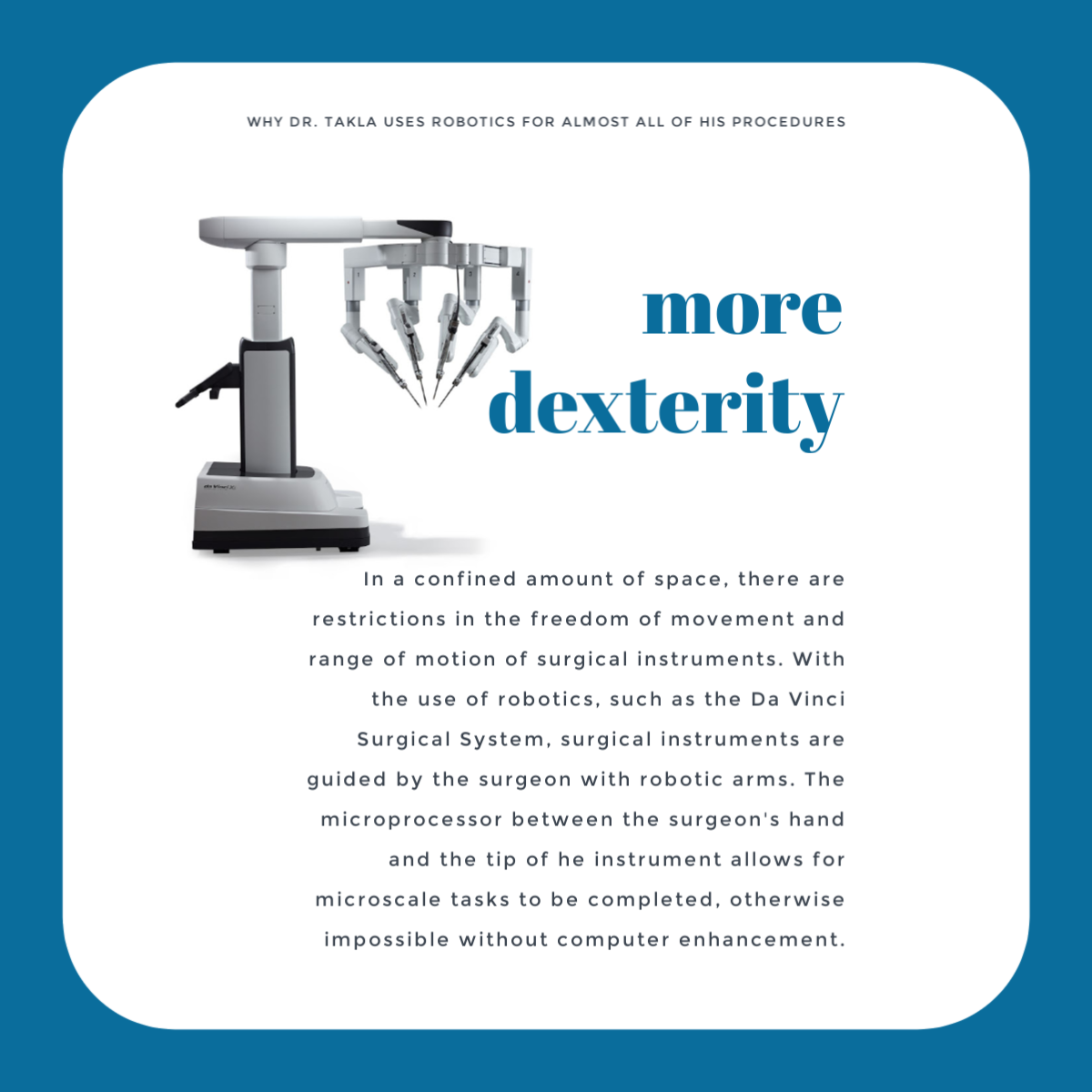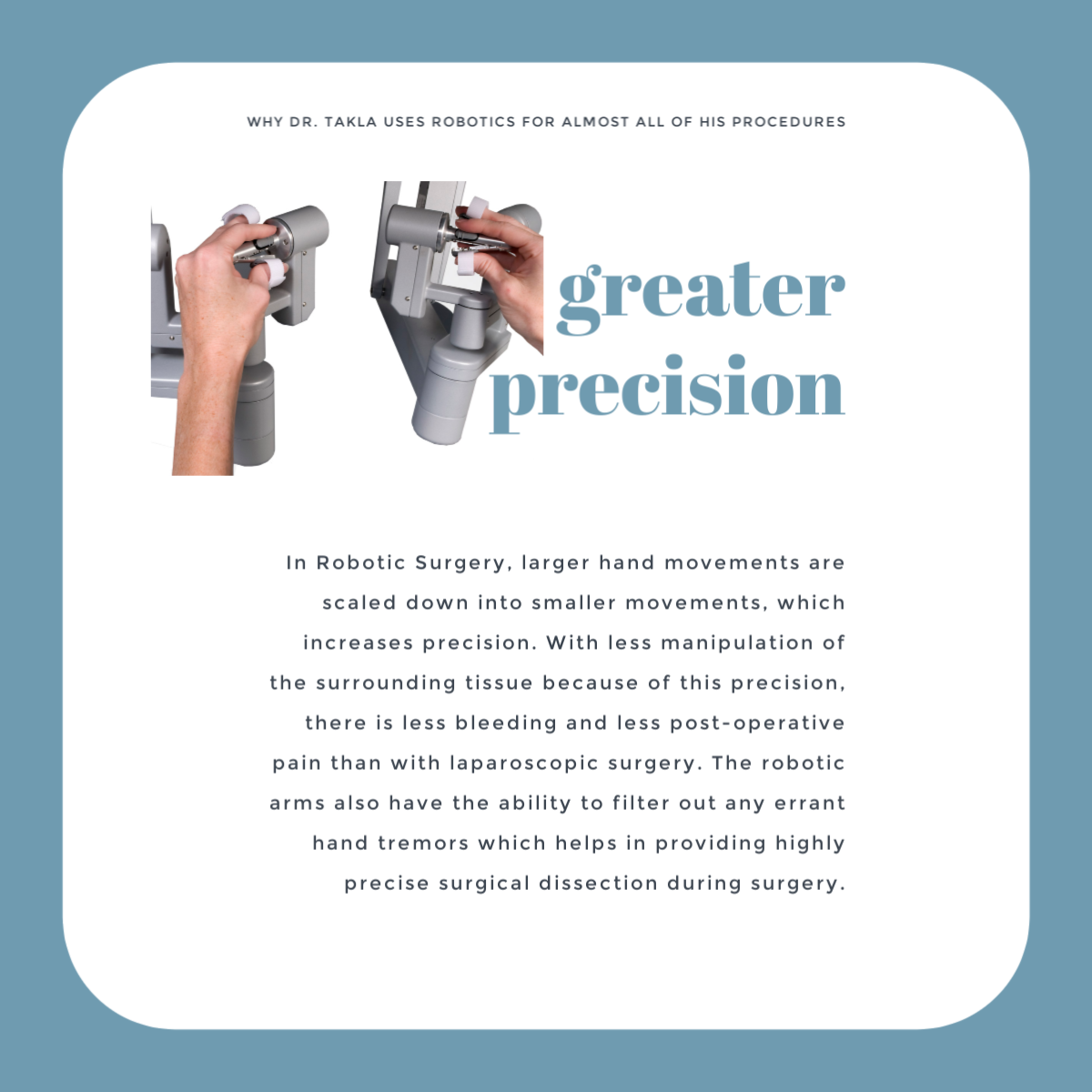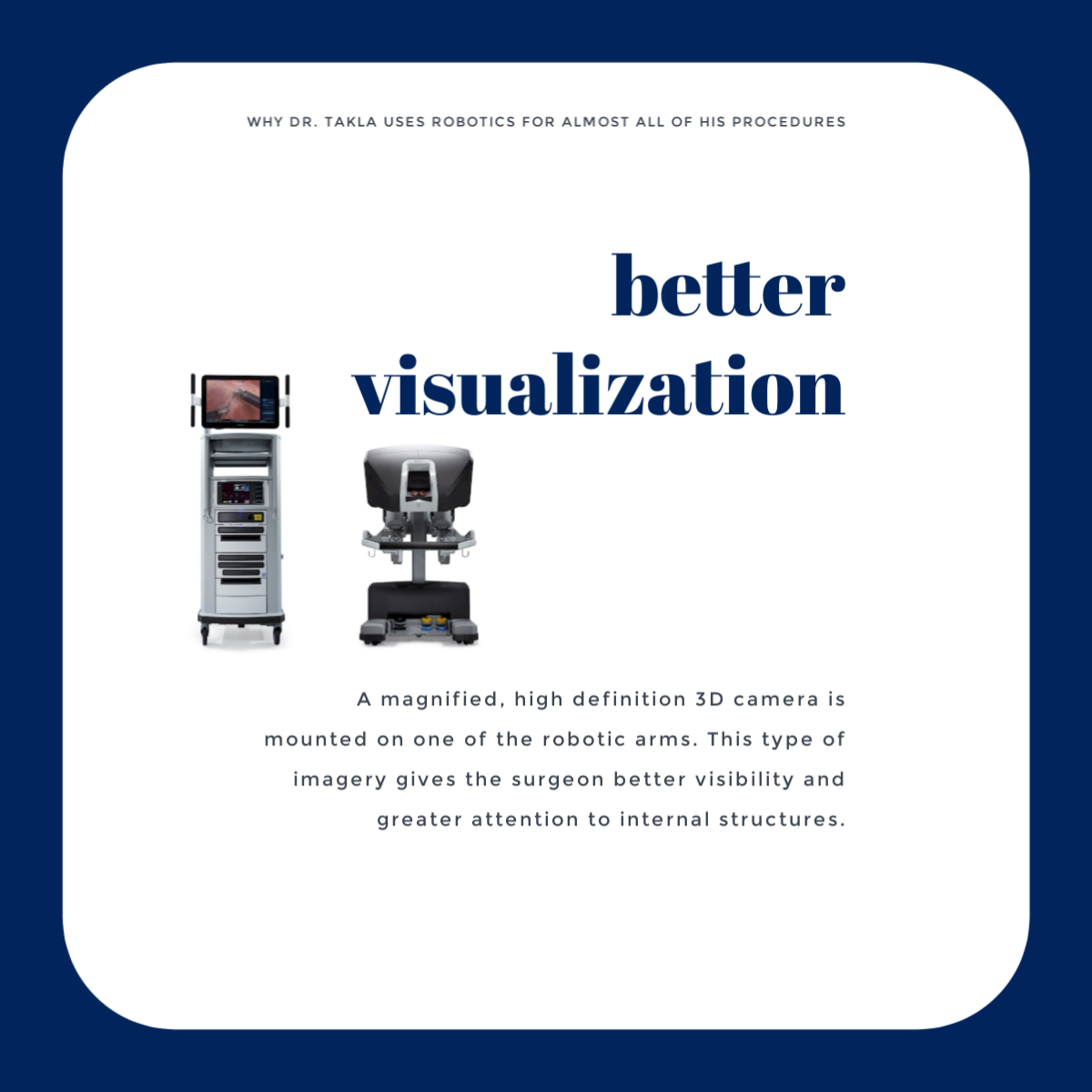How Does Robotic Surgery Work?
At the heart of our minimally invasive robotic surgery program is the da Vinci Surgical System. Surgeries and procedures that once required large incisions and weeks of recovery are now minimally invasive, more effective and return patients to normal activities in a matter of days. Dr. Takla is fellowship-trained in advanced robotic and laparoscopic techniques.
Robots in the Operating Room
The da Vinci Surgical Robot allows doctors to operate with greater precision and minimal discomfort for the patient.
The robotic surgery process. While the procedures vary, the process of robotic surgery typically involves the following:
The surgeon sits at a special console throughout your surgery.
The surgeon operates through a few small incisions using tiny instruments, including a dime-sized 3D camera. The camera gives the surgeon a magnified 360 degree view of the operative field.
The surgeon fully controls all instruments. Every hand movement is translated by the da Vinci Surgical System in real-time to bend and rotate the instruments for precise control during your surgery.
Benefits of robotic surgery. Compared to traditional techniques, the very small incisions created by robotic surgery drastically reduce patients' time in the hospital and their risk of infections. The use of high-definition 3D cameras allows surgeons close-up views of areas they aren't able to see during open surgery. Fully articulating robotic arms mimic the movement of hands, allowing surgeons to have greater dexterity and control than is possible with conventional laparoscopic instruments.
The diagram below illustrates the operating room layout for the da Vinci Surgical robot.
Learn more about the different procedures that can be done using Robotic Surgery:
CONTACT US
Call our office at 603-610-8095 to schedule a consultation with Dr. Takla or click the link below:




















